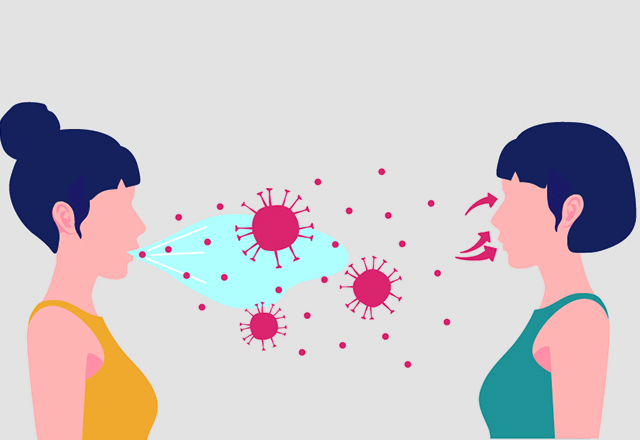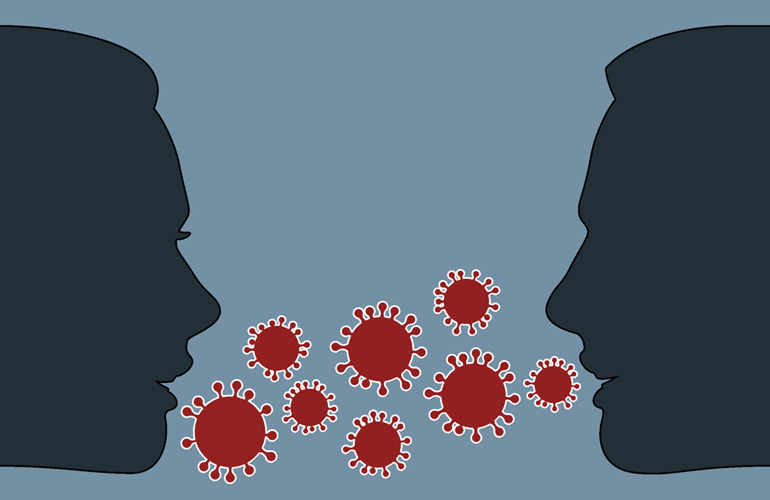Understanding how coronavirus is spread is important for preventing the spread of the virus and protecting yourself and others from infection. Here is what you need to know about the transmission of coronavirus:
Coronavirus Is Spread Through Respiratory Droplets
Coronavirus is spread through respiratory droplets released when an infected person talks, coughs, or sneezes. These droplets can travel through the air and be inhaled by others or land on surfaces and be touched by others.
Close Contact Increases The Risk Of Transmission
The risk of transmission is higher when you are in close contact with an infected person. Close contact is defined as being within 6 feet (2 meters) of an infected person for a prolonged period or having close contact with an infected person's respiratory secretions.
Coronavirus Can Be Spread By People Who Are Asymptomatic Or Pre-Symptomatic
Coronavirus can be spread by people infected with the virus but not showing symptoms. This is known as being asymptomatic. The virus can also be spread by people who are showing early symptoms of the virus, known as being pre-symptomatic. This is why it is important to follow recommended preventive measures, even if you are not showing symptoms.
The Virus Can Be Spread Through Contact With Contaminated Surfaces
Coronavirus can also be spread by touching a surface or object with the virus and then touching your mouth, nose, or eyes. It is not clear how long the virus can survive on surfaces, but it is believed to be several hours to several days.
The Virus Is Not Transmitted Through The Air
It is important to note that the virus is not transmitted through the air. Airborne transmission refers to the spread of infectious agents through the air and can occur with certain infectious diseases, such as tuberculosis. However, the virus that causes COVID-19 is not transmitted through the air.

The Virus Is More Likely To Spread In Crowded Indoor Spaces.
The virus is more likely to spread in crowded, indoor spaces where people are in close contact with one another for prolonged periods. This is because respiratory droplets are more likely to remain in the air in these spaces, increasing the risk of transmission.
The Virus Can Be Spread Through Airborne Transmission In Certain Situations
While the virus is primarily spread through respiratory droplets, there have been some reports of the virus being transmitted through airborne transmission in certain situations. This can occur when an infected person speaks, sings, or shouts, releasing many respiratory droplets that remain suspended in the air for a prolonged period. This is more likely to occur in poorly ventilated spaces.
The Risk Of Transmission Can Be Reduced Through Preventive Measures
Several preventive measures can reduce the risk of transmission of coronavirus. These include washing your hands frequently, covering your mouth and nose when sneezing or coughing, wearing a face mask in public settings, practicing social distancing, and avoiding close contact with sick individuals.
Vaccines Can Help Reduce The Spread Of The Virus
Vaccines can help reduce the spread of the virus by providing immunity to those vaccinated. This can help protect those most vulnerable to the virus, such as older adults and individuals with underlying health conditions.

The Risk Of Transmission May Be Higher In Certain Settings
The risk of transmission may be higher in certain settings, such as nursing homes, long-term care facilities, and correctional facilities. This is because these settings often have many people living in close quarters, making it easier for the virus to spread. It is important for these facilities to implement preventive measures, such as mask-wearing and social distancing, to reduce the risk of transmission.
The Virus Can Be Spread Through Saliva
The virus can be spread through saliva, released when an infected person talks, sings or eats. This is why it is important to avoid sharing food and drinks with others and to wash your hands after eating.
Conclusion
Coronavirus is spread through respiratory droplets released when an infected person talks, coughs, or sneezes. The risk of transmission is higher when you are in close contact with an infected person, and asymptomatic or pre-symptomatic people can spread the virus. The virus can also be spread through contact with contaminated surfaces, but it is not transmitted through the air. Understanding how the virus is transmitted is important for preventing the spread of coronavirus and protecting yourself and others from infection.
Overall, understanding how coronavirus is spread is important for preventing the spread of the virus and protecting yourself and others from infection. By following recommended preventive measures and getting vaccinated, you can help reduce the spread of the virus and protect yourself and others from infection. Suppose you are experiencing symptoms of COVID-19 or have been in close contact with someone who has tested positive for the virus. In that case, it is important to follow the guidelines of your local health department and seek medical attention if necessary.




